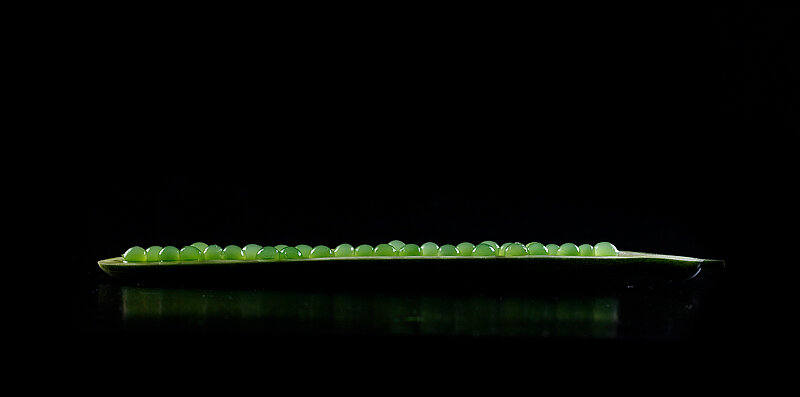Photography: Pt. V - Outtakes
Hi friends;
I’d like to conclude the week by saying thank you – sincerely – to those who have taken a moment to offer a comment of encouragement to us, both for this series of updates and for those past. Please know it truly means a lot to us as we find our way with this.
Sarah suggested I end this discussion about photography by talking a bit about photography failures. I like this idea a lot, but I also realize that the factor that makes “bloopers” compelling from a storytelling standpoint is an outright crash-and-burn: something that’s unequivocally bad. In reality, most failures I’ve experienced are more along the lines of “This isn’t as good of an idea as I thought it might be” or “this just isn’t compelling enough”, which tend to fall into the valley of mediocrity. Nevertheless, I’ve dug some up examples from my digital trash pile to share.
To offer a bit of context: a thing I used to get pretty into on my own blog was looking for opportunities to make little “art projects” out of the the various techniques or ingredients that I was getting to play with. Some examples that I think turned out reasonably well:
I wanted to try similar tactics for this book. For the most part, this has worked out well, but sometimes what seems like a good idea turns out not to be. For example, making an oregano tincture involves sealing fresh oregano with grain alcohol and cooking en sous vide. This starts out looking something like this:
I thought I was being clever and interesting by painting out the outer edges of the vacuum bag in which this oregano is sealed. We’d included this image in one of our early book layouts until one afternoon when Chef Achatz saw it, wrinkled his nose, and asked Chef Micah why we were including a photo of rotting oregano. When I explained what it was, the chefs had an “Ohhhh, right” kind of moment, but it was enough to make me realize that it’s not super-obvious what’s happening in this image, so we decided to scrap it.
For another recipe that uses cantaloupe, I had the bright idea to try building a mosaic of nicely-cubed melon, then realized that – because the melon cubes were all the same color and texture – this didn’t really make for a very interesting image, and in fact only really highlighted my crappy melon cube stacking skills:
Another recipe involves compressing some pear cubes. Apparently resistant to learning from my own mistakes, I thought the textural difference this process introduces might make this cube mosaic idea more compelling. But…meh. These aren’t particularly impactful:
Yet another recipe involves caramelizing some onions. Chef Ingi often stores ingredients like this in vacuum bags to hold them until we need them. Without really thinking it through, I grabbed this bag and tried snapping an image of the caramelized onions:
This obviously isn’t terribly appealing. But Ingi, ever-patient and willing to try helping me with this idea, did something rather incredible and carefully caramelized a half-moon onion slice of onion, then sat it perfectly aside its uncaramelized counterpart:
Incredible technique aside, this image notably more compelling for sure. But we’re not sure it deserves an entire page of space (plus, the layout for this recipe feels a little too congested if we try to wedge this in just for the sake of including it).
But I have experienced one failure that’s unarguably terrible. Our Gin & Tonic involves making spherified cucumber juice. I find the green spheres compelling, and cucumbers themselves are really pretty, so I wanted to try juxtaposing the two together.
These are all just vaguely weird and mediocre though. But I wasn’t ready to give up on this idea, so I came back to the studio the next day to try some even worse ideas:
And finally, here’s one we’re on the fence about. One of our recipes involves a pretty fascinating step wherein a mixture is clarified by milk curds. The idea is that you add milk to an acidulated mixture, which causes the milk to curdle. The mixture is then strained through a chinois, and – this bit is important – becomes clarified by flowing through the curds (so, it’s the curds that are doing the actual straining, not the chinois). Chef Ingi and I thought this step was worth dwelling on a bit, so we built an ad-hoc tank out of a few sheets of plexiglass, filled it with water to which we’d added a bit of vinegar, and then poured milk into it to demonstrate the curdling effect:
We can’t tell if this image is awesome or really offputting. Anyone else want to weigh in?
In between sharing these updates, we’ve pressed forward with more photography this week (including building a small sand dune in the dining room of the Aviary, shooting a drink on it, and cleaning it up in the span of about a half hour between staff meal and doors). We hope to finish the bulk of the photography in the next couple of weeks. Sarah will then need some runway to add these photos to her design, and we’ll take a step back and see what gaps exist or what needs more coverage. While she’s working on this, I’ll shift focus back to the writing side of things, honing some essays we’ve written about food pairing, non-alcoholic and low-alcohol cocktails, and a host of other topics we’ve been inspired to include.
Until next time;
–a


















